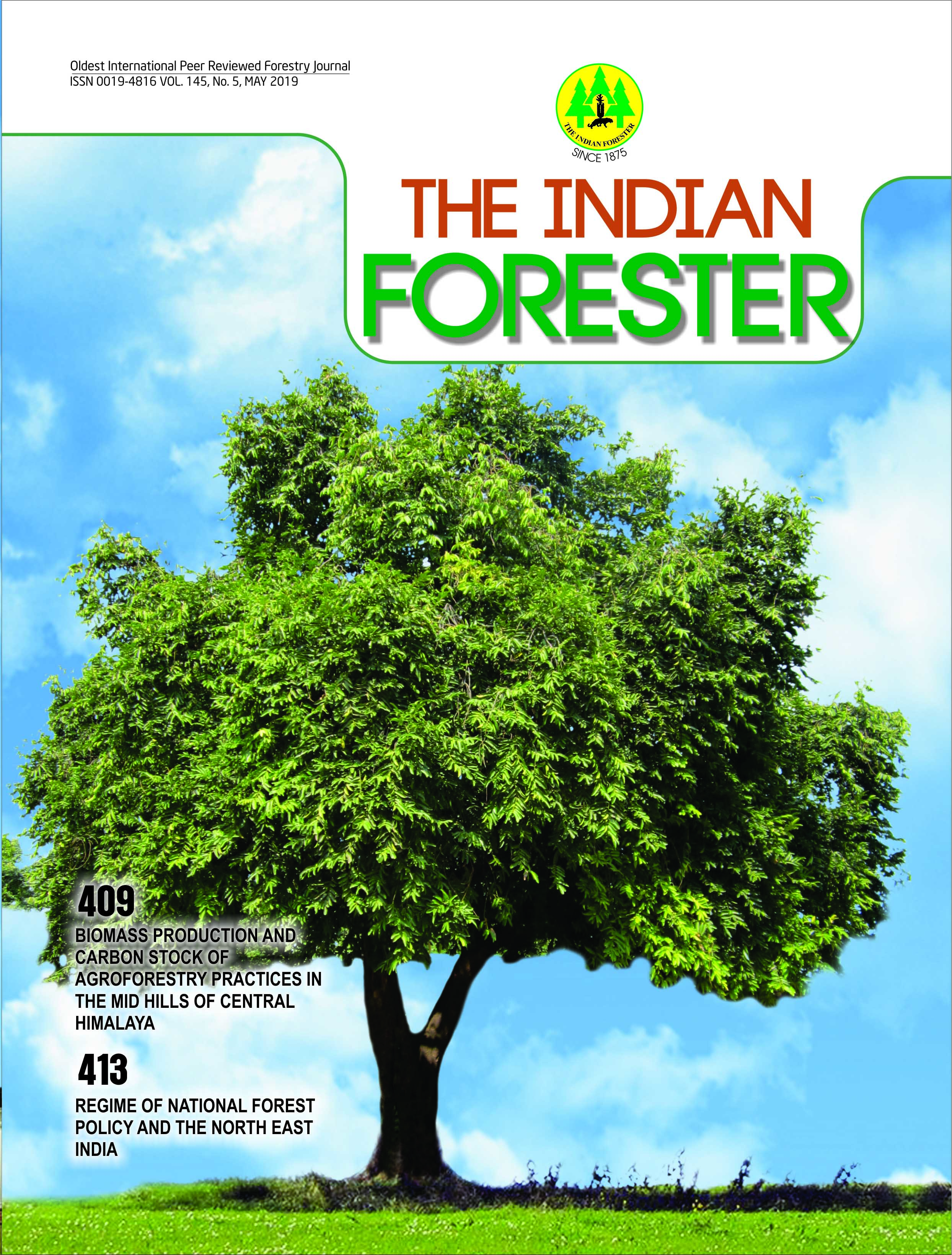Conservation Breeding and Reintroduction of Cheer Pheasant In Himachal Pradesh
DOI:
https://doi.org/10.36808/if/2019/v145i5/145688Abstract
No Abstract.References
Ali S. and Ripley S.D. (1968). Handbook of the birds of India and Pakistan: together with those of Nepal, Sikkim, Bhutan and Ceylon (Vol. 1). Oxford University Press.
Baker S. (1932). Nidification of the birds of the Indian Empire. Vols 1-IV: London: Taylor and Francis.
Ballou J.D., Lacy R.C. and Pollak J.P. (2010). PMx: software for demographic and genetic analysis and management of pedigreed populations. Chicago Zoological Society, Brookfield, Illinois, USA.
Beebe W. (1918). Monograph of the Pheasants.
Bird Life International (2017). Catreus wallichii (amended version of 2016 assessment). The IUCN Red List of Threatened Species 2017: e.T22679312A112455142. http://dx.doi.org/10.2305/IUCN.UK.2017-1.RLTS.
T22679312A112455142.en. Downloaded on 28 March 2019.
Buner F. (2008). Guidelines for re-establishing grey partridges through releasing. Game and Wildlife Conservation Trust.
Garson P.J., Young L. and Kaul R. (1992). Ecology and conservation of the cheer pheasant Catreus wallichii: studies in the wild and the progress of a reintroduction project. Biological conservation, 59(1): 25-35.
IUCN/SSC (2013). Guidelines for reintroductions and other conservation translocations. Version 1.0.
IUCN/SSC (2014). Guidelines on the Use of Ex situ Management for Species Conservation. Version 2.0. Gland, Switzerland: IUCN Species Survival Commission.
Johnsgard PA. (1986). Pheasants of the world. New York: Oxford University Press.
Li Y., Ye X., Wang M., Li X., Dong R., Huo Z. and Yu X. (2018). Survival rates of a reintroduced population of the Crested Ibis Nipponianippon in Ningshan County (Shaanxi, China). Bird Conservation International, 28(1): 145-156.
McGowan P.J.K. and Kirwan G.M. (2019). Cheer Pheasant (Catreus wallichii). In: Handbook of the Birds of the World Alive (del Hoyo, J., Elliott, A., Sargatal, J., Christie, D.A. & de Juana, E. eds.). Lynx Edicions, Barcelona. (retrieved from https://www.hbw.com/node/53502 on 28 March 2019).
Pérez J.A., Alonso M.E., Gaudioso V.R., Olmedo J.A., DÃez C. and Bartolomé D. (2004). Use of radiotracking techniques to study a summer repopulation with red-legged partridge (Alectorisrufa) chicks. Poultry science, 83(6): 882-888.
Perkins R., Boal C.W. and Dabbert C.B. (2018). Raptor selection of captive reared and released Galliform birds. Wildlife Society Bulletin, 42(4): 713-715.
Santilli F. and Bagliacca M. (2019). Fear and behavior of young pheasants reared with or without parent figure. Avian Biology Research, 1758155919826765.
Sheppard C., Dierenfeld E. and Burnett M. (1998). Recommendations for diets of captive pheasants, based on information from diets of wild birds. WPA News.
Sokos C.K., Birtsas P.K. and Tsachalidis E.P. (2008). The aims of galliforms release and choice of techniques. Wildlife Biology, 14(4): 412-423.
Woodford M.H. (2000). Quarantine and health screening protocols for wildlife prior to translocation and release into the wild. Wildlife Disease and Zoonotics. IUCN Species Survival Commission's Veterinary Specialist Group, Gland, Switzerland, the Office International des Epizooties (OIE), Paris, France, Care for the Wild, U.K., and the European Association of Zoo and Wildlife Veterinarians, Switzerland.
World Pheasant Association (2009). Guidelines for the reintroduction of galliformes for conservation purposes.
Downloads
Downloads
Published
How to Cite
Issue
Section
License
Unless otherwise stated, copyright or similar rights in all materials presented on the site, including graphical images, are owned by Indian Forester.





